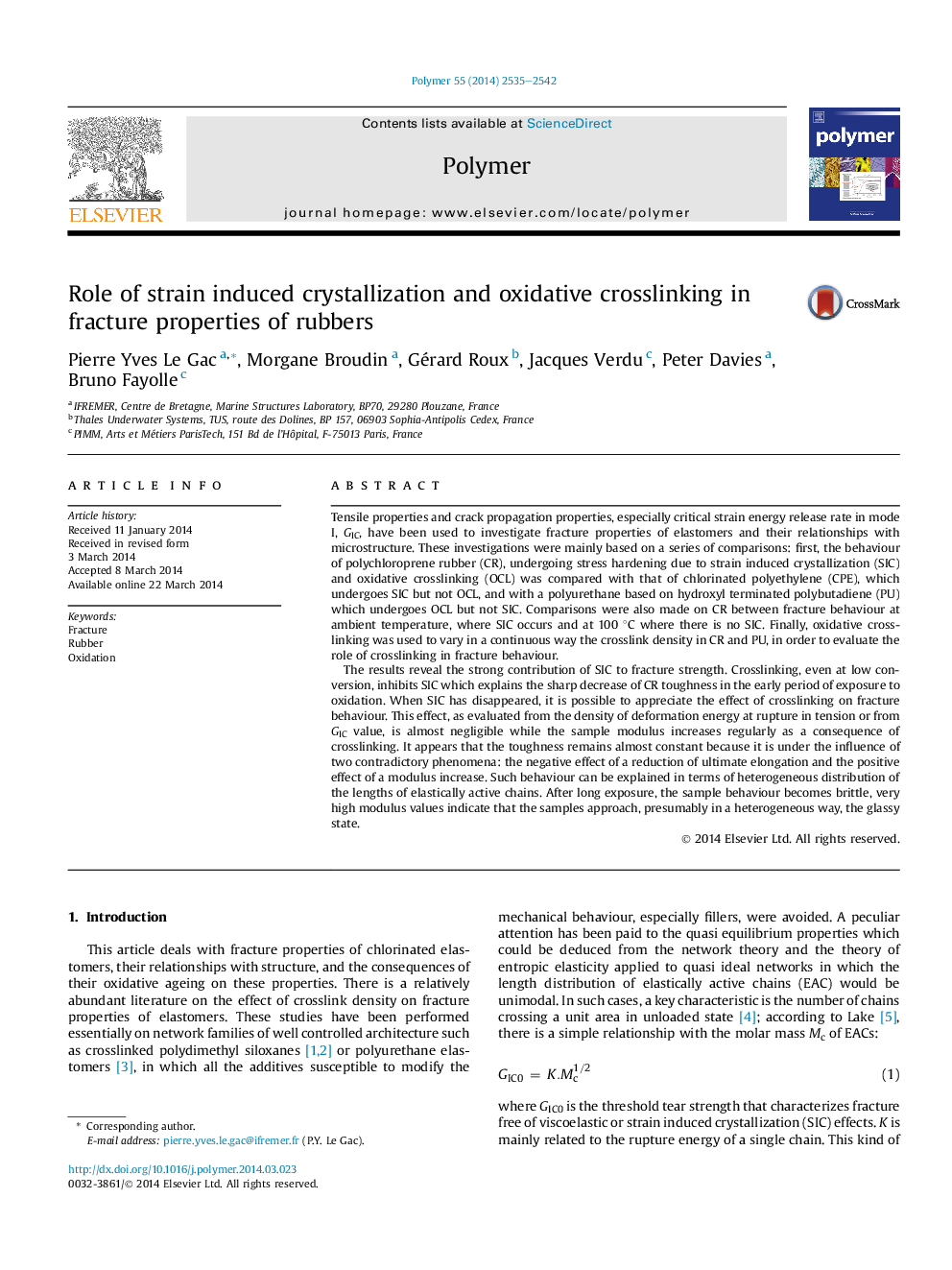| کد مقاله | کد نشریه | سال انتشار | مقاله انگلیسی | نسخه تمام متن |
|---|---|---|---|---|
| 5180910 | 1380946 | 2014 | 8 صفحه PDF | دانلود رایگان |
Tensile properties and crack propagation properties, especially critical strain energy release rate in mode I, GIC, have been used to investigate fracture properties of elastomers and their relationships with microstructure. These investigations were mainly based on a series of comparisons: first, the behaviour of polychloroprene rubber (CR), undergoing stress hardening due to strain induced crystallization (SIC) and oxidative crosslinking (OCL) was compared with that of chlorinated polyethylene (CPE), which undergoes SIC but not OCL, and with a polyurethane based on hydroxyl terminated polybutadiene (PU) which undergoes OCL but not SIC. Comparisons were also made on CR between fracture behaviour at ambient temperature, where SIC occurs and at 100 °C where there is no SIC. Finally, oxidative crosslinking was used to vary in a continuous way the crosslink density in CR and PU, in order to evaluate the role of crosslinking in fracture behaviour.The results reveal the strong contribution of SIC to fracture strength. Crosslinking, even at low conversion, inhibits SIC which explains the sharp decrease of CR toughness in the early period of exposure to oxidation. When SIC has disappeared, it is possible to appreciate the effect of crosslinking on fracture behaviour. This effect, as evaluated from the density of deformation energy at rupture in tension or from GIC value, is almost negligible while the sample modulus increases regularly as a consequence of crosslinking. It appears that the toughness remains almost constant because it is under the influence of two contradictory phenomena: the negative effect of a reduction of ultimate elongation and the positive effect of a modulus increase. Such behaviour can be explained in terms of heterogeneous distribution of the lengths of elastically active chains. After long exposure, the sample behaviour becomes brittle, very high modulus values indicate that the samples approach, presumably in a heterogeneous way, the glassy state.
Journal: Polymer - Volume 55, Issue 10, 13 May 2014, Pages 2535-2542
